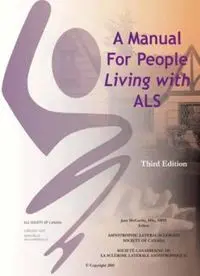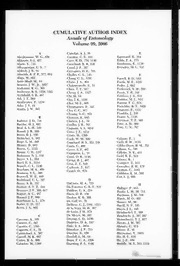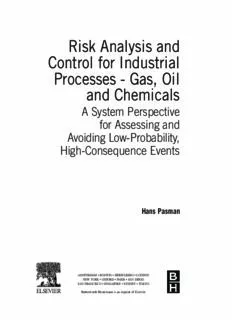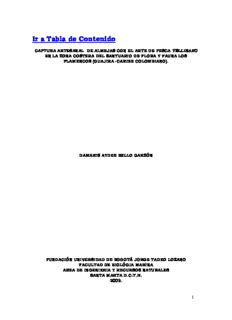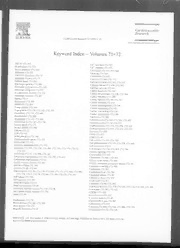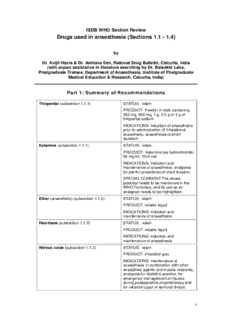
ISDB WHO Section Review: Anaesthesia - World Health Organization PDF
Preview ISDB WHO Section Review: Anaesthesia - World Health Organization
ISDB WHO Section Review Drugs used in anaesthesia (Sections 1.1 - 1.4) by Dr. Avijit Hazra & Dr. Amitava Sen, Rational Drug Bulletin, Calcutta, India (with expert assistance in literature searching by Dr. Baisakhi Laha, Postgraduate Trainee, Department of Anaesthesia, Institute of Postgraduate Medical Education & Research, Calcutta, India) Part 1: Summary of Recommendations Thiopental (subsection 1.1.1) STATUS: retain PRODUCT: Powder in vials containing 250 mg, 500 mg, 1 g, 2.5 g or 5 g of thiopental sodium INDICATIONS: Induction of anaesthesia prior to administration of inhalational anaesthetic; anaesthesia of short duratioin Ketamine (subsection 1.1.1) STATUS: retain. PRODUCT: ketamine (as hydrochloride) 50 mg/ml, 10ml vial INDICATIONS: Induction and maintenance of anaesthesia, analgesia for painful procedures of short duration SPECIAL COMMENT The abuse potential needs to be mentioned in the WHO Formulary, and its use as an analgesic needs to be highlighted. Ether (anaesthetic) (subsection 1.1.2) STATUS: retain PRODUCT: volatile liquid INDICATIONS: induction and maintenance of anaesthesia Halothane (subsection 1.1.2) STATUS: retain PRODUCT: volatile liquid INDICATIONS: induction and maintenance of anaesthesia Nitrous oxide (subsection 1.1.3) STATUS: retain PRODUCT: inhalation gas INDICATIONS: maintenance of anaesthesia in combination with other anaestheic agents and muscle relaxants; analgesia for obstetric practice, for emergency management of injuries, during postoperative physiotherapy and for refractory pain in terminal illness. 1 Oxygen (subsection 1.1.3) STATUS: retain PRODUCT: inhalation gas INDICATIONS: to maintain an adequate oxygen tension in inhalational anaesthesia. SPECIAL COMMENT: The uses and dosage sections in the WHO Formulary should be expanded. Bupivacaine hydrochloride (subsection 1.2) STATUS: retain PRODUCT: solution for injection, bupivacaine hydrochloride 2.5mg/ml (0.25%), 10-ml ampoule; 5mg/ml (0.5%), 10-ml ampoule; 5mg/ml (0.5%) with glucose 75mg/ml (7.5%), 4-ml ampoule INDICATIONS: infiltration anaesthesia; peripheral and sympathetic nerve block; spinal anaesthesia; postoperative pain relief. SPECIAL COMMENT: The dosage section in the WHO Formulary should be expanded. Lidocaine hydrochloride (subsection 1.2) STATUS: retain PRODUCT: lidocaine (hydrochloride) solution for injection 5mg/ml (0.5%), 20- ml ampoule; 10mg/ml (1%), 20-ml ampoule; 50mg/ml (5%),2-ml ampole to be mixed with glucose 75mg (7.5%). lidocaine (hydrochloride) solution for injection with epinephrine, lidocaine hydrochloride 10mg/ml (1%) with epinephrine 5 micrograms/ml (1 in 200,000), 20 ml ampoule. lidocaine (hydrochloride) solution for injection with epinephrine (dental use), lidocaine hydrochloride 20mg/ml (2%) with epinephrine 12.5 micrograms/ml (1 in 80,000), 2.2 ml dental cartridge. Topical gel or solution, lidocaine hydrochloride 20-40 mg/ml (2-4%) INDICATIONS: surface anaesthesia for mucous membranes; infolration aneasthetic, peripheral and sympathetic nerve block; dental anaesthesia, spinal anaesthesia; intravenous regional anaesthesia; arrhythmia (not asssessed here). SPECIAL COMMENT The dosage section in the WHO Formulary should be expanded. 2 Ephedrine hydrochloride (subsection 1.2) STATUS: retain PRODUCT: ephedrine hydrochloride solution for injection 30mg/ml,1-ml ampoule INDICATIONS: prevention of hypotension during delivery under spinal or epidural anaesthesia. Epinephrine (adrenaline) (subsection 1.2) STATUS: retain PRODUCT: solution for injection INDICATIONS: vasoconstrictor to retard systemic absorption of infiltrated local anaesthetics Atropine sulfate (subsection 1.3) STATUS: retain PRODUCT: atropine sulfate 600 microgrames solution for injection, 1-ml ampoule INDICATIONS: to inhibit salivary secretions; to inhibit arrythmias resulting from excessive vagal stimulation; to block the parasympathomimietic effects of anticholinesterases such as neostigmine; organophosphate poisoning; antispmodic (not discussed here); mydriasis and cycloplegia (not discussed here) Diazepam (subsection 1.3) STATUS: retain PRODUCT: tablets 2mg, 5mg Injection (solution for injection)diazepam 5mg/ml, 2-ml ampoule INDICATIONS: representative benzodiazepine for premedication before major or minor surgery; sedation with amnesia for endoscopic procedures and surgery under local anaesthesia; epilepsy; anxiety disorders Promethazine hydrochloride (subsection STATUS: retain 1.3) PRODUCT: tablets - promethazine hydrochloride 10mg, 25 mg Elixir (oral solution) - promethazine hydrochloride 5mg/ml Injection (solution for injection) - promethazine hydrochloride 25mg/ml, 2- ml ampoule INDICATIONS: premedication prior to surgery; antiemetic. Alcuronium chloride (subsection 1.4) STATUS: delete PRODUCT: injection (solution for injection) alcuronium chloride 5mg/ml, 2- ml ampoule 3 INDICATIONS: as representative non- depolarising muscle relaxant for muscle relaxation during surgery. Vecuronium bromide (subsection 1.4) STATUS: retain PRODUCT: injection (powder for solution for injection), vecuronium bromide 10-mg vial. INDICATIONS: as complementary non- depolarising muscle relaxant for muscle relaxation during surgery SPECIAL COMMENT: to be listed as the representative non-depolarising muscle relaxant. Atracurium besilate (add to subsection 1.4) STATUS: add (as a complementary agent) PRODUCT: to be determined INDICATIONS: non-depolarising peripheral neuromuscular blocking agent for muscle relaxation during surgery, facilitating endotracheal intubation and, in intensive care units, facilitating controlled pulmonary ventilation. Suxamethonium chloride (subsection 1.4) STATUS: retain PRODUCT: injection (solution for injection), suxamethonium chloride 50mg/ml, 2-ml ampoule. (powder for solution for injection), suxamethonium chloride. INDICATIONS: brief muscular paralysis during endotracheal intubation, endoscopy, and electroconvulsive therapy. Neostigmine metilsulfate (subsection 1.4) STATUS: retain PRODUCT: injection (solution for injection) neostigmine metilsulfate 500 micrograms/ml, 1-ml ampoule; 2.5mg/ml, 1-ml ampoule INDICATIONS:counteract the effect of non-depolarising muscle relaxants administered during surgery; postoperative non-obstructive urinary retention; myasthenia gravis. 4 Part 2: Individual product reviews 2.1 Thiopental sodium (subsection 1.1.1) Introduction Thiopental is a rapid and ultra-short acting barbiturate widely used for the induction of general anaesthesia by the intravenous route. It is listed as a representative intravenous general anaesthetic in the 2004 WHO Model Formulary.1 Ketamine is the other listed agent in this class. In addition to induction of anaesthesia prior to administration of inhalational general anaesthetics, thiopental can be used for maintenance of anaesthesia of short duration. Thiopental is also used in the emergency management of refractory status epilepticus, when first line agents have failed, and as a pharmacological option to reduce intracranial pressure in neurosurgical cases. The product2,3 Thiopental is available in the form of a powder in vials containing 250 mg, 500 mg, 1 g, 2.5 g or 5 g of thiopental sodium. It is mixed with 6% anhydrous sodium carbonate to increase its solubility in water. The powder is reconstituted with an appropriate quantity of water for injection (e.g. 20 mL to 0.5 g, 40 mL to 1 g or 100 mL to 2.5 g) to the usual concentration of 2.5%. A 5% solution has been used but is not recommended for reasons stated below. Sodium chloride 0.9% and dextrose 5% are the other compatible diluents, although solutions in dextrose are relatively unstable. Thiopental sodium injections are strongly alkaline and incompatible with many drugs, including suxamethonium, other neuromuscular blockers, morphine, pentazocine, glycopyrrolate and many antibiotics. Solutions should be protected from light and used up within 24 hours unless refrigerated at 2 - 8 °C. Those showing cloudiness or precipitation should not be used. It is best to use freshly prepared solutions. In some countries, thiopental sodium is available as a rectal preparation. Dosage2,3 Induction of general anaesthesia, by intravenous injection (directly into a vein or into a fast-running infusion) over 10 - 15 seconds, ADULT 100 - 150 mg (maximum 5 mg/kg), followed by a further quantity, if necessary according to response, after 30 - 60 seconds; CHILD 2 - 7 mg/kg. To exclude inadvertent intra-arterial injection, it is preferable to avoid the medial side of the antecubital fossa, in case the pulsation of an aberrant ulnar artery is not detected or is obliterated by a tight tourniquet. It must be noted that the dose and speed of injection is tailored to the age and condition of the patient, the premedication used and pre-treatment with opioids immediately prior to induction. In obese patients, dose should be calculated based on lean body mass. It is usual 5 practice, in unfit patients, to inject a small initial test dose (e.g. 1 - 2 mL) and then proceed with the full injection if no problems occur. Smooth induction can be facilitated by a small dose of a short-acting opioid (e.g. fentanyl 1 - 2 microgram/kg intravenously) given before thiopental. In patients aged over 60 years, dose requirements decline markedly and 2 - 2.5 mg/kg may suffice in the elderly. Dose requirements may be increased in subjects with a history of dependence on opioids, sedative-hypnotics or alcohol. No special problems are reported during pregnancy or breast-feeding. To maintain anaesthesia, intermittent doses may be given but care has to be taken to avoid respiratory depression. For short operations, thiopental may be used as the sole agent, but for longer procedures it should be supplemented by oxygen-nitrous oxide or a parenteral opioid or both. In status epilepticus, by intravenous injection, loading dose of 5 mg/kg, followed after 30 minutes by intravenous infusion at 1 - 3 mg/kg or adjusted to maintain a plasma level of 60 - 100 microgram/mL. Administration should continue for at least 12 hours after seizure activity has ceased and then slowly discontinued. Adverse drug reactions3,4 • Hypotension: Risk is increased if large doses are used or the anaesthetic is administered to shocked, hypovolaemic or previously hypertensive patients. Lightening of anaesthesia does not necessarily reverse the hypotension, and it may continue into the postoperative period. If accompanied by respiratory depression, this will lead to hypoxia. Thiopental should not be administered in the sitting position. • Apnoea and respiratory depression: Risk is increased if large doses or heavy opioid premedication is used • Heightening of laryngeal reflexes, particularly in light anaesthesia, and laryngospasm induced by minor stimuli. Bronchospasm is rare but may occur in asthmatic subjects. • Thrombophlebitis: This is uncommon if the 2.5% solution is used. • Tissue necrosis following extravasation: Median nerve damage can occur in the antecubital fossa, which is another reason why this site is not preferred. • Intra-arterial injection: Inadvertent intra-arterial injection has occurred in the brachial artery, aberrant ulnar artery in the antecubital fossa and also aberrant arteries at the wrist. Following intra-arterial injection, symptoms include intense burning pain, blanching of the forearm or hand, and the development of blisters distally. Depending on the intensity of vasospasm and the extent of the thrombosis, and the anatomical distribution of the affected vascular bed, sequelae can vary from transient hyperaesthesia to loss of digits. The risk is greater with the 5% solution. • Inhibition of platelet function: The clinical significance of this is unknown, though it has been suggested that anaesthetic-induced platelet inhibition may lead to higher transfusion rates and prolonged operation times.5,6 • Allergic reactions: Severe anaphylactic or anaphylactoid reactions have been reported but are rare. Contraindications3,4 • Anticipated difficulty in accessing and maintaining an open airway or lack of resuscitative facilities. 6 • Porphyria – barbiturates may precipitate lower motor neurone paralysis or severe cardiovascular collapse. • Known hypersensitivity to barbiturates. • Marked hypovolaemia, including acute blood loss. • Cardiovascular disease e.g. myocardial disease, valvular stenosis, constrictive pericarditis. • Asthma and obstructive respiratory disease. • Severe hepatic disease. • Renal failure. • Neuromuscular disorders e.g. myasthenia gravis, myotonic dystrophy. • Reduced metabolic rate e.g. myxoedema, adrenocortical insufficiency. • Obstetrics – Excessive doses may result in cardiovascular or respiratory depression of the neonate, especially if the interval between induction and delivery is short. • Outpatient anaesthesia when there is lack of facilities for recovery, lack of attendants to take home or the subject needs to be ambulant on the same day.7 Apart from the first three, all other contraindications are relative and thiopental may be used with care, at reduced doses if necessary or given more slowly than usual. The experience of the anaesthetist and availability of resuscitation facilities also count. Evidence of value Thiopental is a time-tested intravenous induction agent in general anaesthesia and therefore recent controlled studies on its effectiveness are scarcely reported in literature. However, comparative studies with new intravenous agents are being reported. Propofol is one such new agent that offers the advantages of rapid induction and rapid recovery. Initial studies have suggested that propofol may be associated with a lower incidence of post-operative morbidity than thiopental.8 In day care surgery, prompt recovery from anaesthesia and minimal postoperative morbidity, helps ease the issues surrounding a high case burden. Propofol may be superior to thiopental in this respect,7,8 specially in ocular surgery.10 In elderly patients, propofol induction may produce more stable haemodynamics after intubation than thiopental induction.11 Further, propofol - nitrous oxide anaesthesia may be associated with significantly less post-operative nausea and vomiting than thiopental - nitrous oxide.12 However, there are also various situations where propofol induction has not been found to offer significant advantage over thiopental.13,14 Propofol has been advocated for sedation in intensive care because of superior recovery characteristics. However, at least one comparative study has reported that propofol may offer no clinical benefit in short-term sedation, over opioid-thiopental combination, following cardiac surgery.15 Despite more stable haemodynamics, when compared to thiopental, propofol may not facilitate improved cognitive recovery in geriatric patients undergoing prolonged surgery.16 Clonidine premedication provides better haemodynamics with thiopental than with propofol.17 Economic advantage probably still rests with thiopental.18 Intravenous propofol injection is usually painful and a small dose of thiopental, before or with propofol, may reduce the pain considerably.19,20 7 Thiopental has been found to facilitate maintenance of haemodynamic stability during semi-elective nasotracheal intubation in neonates than in un-premedicated babies.21 Rapid intravenous induction of general anaesthesia is indicated in infants at risk of vomiting or regurgitation to reduce the risk of aspiration of gastric contents. Thiopental can be used safely in this situation and compares well with propofol in haemodynamic stability.22 The combination of a short acting opioid and thiopental is used routinely in rapid sequence induction-intubation with muscle relaxants.23 It has also been used for intubation without muscle relaxants.24 Large controlled studies on use of thiopental in refractory status epilepticus have not been reported recently. However, a meta-analysis has reported thiopental to be better than diazepam.25 Thiopental has been used in the anaesthetic management of electroconvulsive therapy and is comparable to sevoflurane in this regard.26 Thiopental can be used with minimal risk in patients with intracranial hypertension.27 It produces cerebral metabolic depression and cerebral vasoconstriction. By reducing the metabolic rate it may offer cerebral neuroprotection in critical situations. However, this aspect of use of thiopental is still experimental.28 Recommendation Thiopental remains one of the most widely used intravenous anaesthetics offering the advantages of efficacy, convenience of use and economy. It is safe if recommendations are followed. Pharmacokinetic aspects of the drug have been studied intensively to determine which parameters (in patient characteristics, diseases and administration modalities) influence effective dose and concentrations in individual patients.29 Thiopental should be retained in the WHO Model List of Essential Medicines. References 1. General anaesthetics and oxygen. In: Mehta DK, Ryan RSM, Hogerzeil HV, editors. WHO model formulary 2004. Geneva: World Health Organization, 2004. p. 17-21. 2. Thiopental sodium. In: Sweetman SC, editor. Martindale: The complete drug reference. 33rd ed. London: The Pharmaceutical Press, 2002. p. 1269-70. 3. Thiopental (sodium). In: Dollery C, editor. Therapeutic drugs. 2nd ed. Vol 2. Edinburgh: Churchill Livingstone, 1999. p. T92-5. 4. Intravenous anaesthetic agents. In: Aitkenhead AR, Rowbotham DJ, Smith G. Textbook of anaesthesia. 4th ed. Edinburgh: Churchill Livingstone, 2001. p. 169-83. 5. Gries A, Weis S, Herr A, Graf BM, Seelos R, Martin E, Bohrer H. Etomidate and thiopental inhibit platelet function in patients undergoing infrainguinal vascular surgery. Acta Anaesthesiol Scand 2001; 45: 449-57. 6. Dordoni PL, Frassanito L, Bruno MF, Proietti R, de Cristofaro R, Ciabattoni G, et al. In vivo and in vitro effects of different anaesthetics on platelet function. Br J Haematol 2004; 125: 79-82. 7. Pollard BJ, Elliott RA, Moore EW. Anaesthetic agents in adult day case surgery. Eur J Anaesthesiol 2003; 20: 1-9. 8. Djordjevic B, Stojiljkovic MP, Loncar-Stojiljkovic D, Krivokapic D, Adamov A. Adverse effects reported after inductive doses of the intravenous anesthetics, thiopentone, etomidate and propofol [Article in Serbian]. Vojnosanit Pregl 1999; 56: 143-50. 8 9. Viitanen H, Annila P, Rorarius M, Paloheimo M, Baer G. Recovery after halothane anaesthesia induced with thiopental, propofol-alfentanil or halothane for day-case adenoidectomy in small children. Br J Anaesth 1998; 81(6): 960-2. 10. Serin S, Elibol O, Sungurtekin H, Gonullu M. Comparison of halothane/thiopental and propofol anesthesia for strabismus surgery. Ophthalmologica 1999; 213: 224-7. 11. Yang CY, Hsu JC, Lin CM, Huang SJ, Chung HS, Shyr MH. Hemodynamic responses of thiopental and propofol in different-aged patients during endotracheal intubation. Chang Gung Med J 2001; 24: 376-82. 12. Chanvej L, Kijsirikul S, Thongsuksai P, Naheem L. Post-operative nausea and vomiting in out-patient gynecologic laparoscopy: a comparison of thiopental-nitrous oxide, propofol- nitrous oxide and total intravenous anesthesia using propofol. J Med Assoc Thai 2001; 84: 697-704. 13. Coolong KJ, McGough E, Vacchiano C, Pellegrini JE. Comparison of the effects of propofol versus thiopental induction on postoperative outcomes following surgical procedures longer than 2 hours. AANA J 2003; 71: 215-22. 14. Myles PS, Hunt JO, Fletcher H, Smart J, Jackson T. Part I: propofol, thiopental, sevoflurane, and isoflurane-A randomized, controlled trial of effectiveness. Anesth Analg 2000; 91: 1163-9. 15. Leino K, Nunes S, Valta P, Pikanen O, Vanakoski J, Takala J. The effect of sedation on weaning following coronary artery bypass grafting: propofol versus oxycodone-thiopental. Acta Anaesthesiol Scand 2000; 44: 369-77. 16. Fredman B, Noga J, Zohar E, Yaretzky A, Jedeikin R. Influence of thiopental and propofol on postoperative cognitive recovery in the elderly patient undergoing general anesthesia. J Clin Anesth 1999; 11: 635-40. 17. Marinangeli F, Cocco C, Ciccozzi A, Ciccone A, Donatelli F, Facchetti G, et al. Haemodynamic effects of intravenous clonidine on propofol or thiopental induction. Acta Anaesthesiol Scand 2000; 44: 150-6. 18. Jackson T, Myles PS. Part II: total episode costs in a randomized, controlled trial of the effectiveness of four anesthetics. Anesth Analg 2000; 91: 1170-5. 19. Agarwal A, Ansari MF, Gupta D, Pandey R, Raza M, Singh PK, et al. Pretreatment with thiopental for prevention of pain associated with propofol injection. Anesth Analg 2004; 98: 683-6. 20. Kau YC, Wu RS, Cheng KS. Propofol-sodium thiopental admixture reduces pain on injection. Acta Anaesthesiol Sin 2000; 38: 9-13. 21. Bhutada A, Sahni R, Rastogi S, Wung JT. Randomised controlled trial of thiopental for intubation in neonates. Arch Dis Child Fetal Neonatal Ed 2000; 82: F34-7. 22. Wodey E, Chonow L, Beneux X, Azzis O, Bansard JY, Ecoffey C. Haemodynamic effects of propofol vs thiopental in infants: an echocardiographic study. Br J Anaesth 1999; 82: 516-20. 23. Blobner M, Mirakhur RK, Wierda JM, Wright PM, Olkkola KT, Debaene B, et al. Rapacuronium 2.0 or 2.5 mg kg-1 for rapid-sequence induction: comparison with succinylcholine 1.0 mg kg-1. Br J Anaesth 2000; 85: 724-31. 24. Durmus M, Ender G, Kadir BA, Nurcin G, Erdogan O, Ersoy MO. Remifentanil with thiopental for tracheal intubation without muscle relaxants. Anesth Analg 2003; 96: 1336- 9. 25. Gilbert DL, Gartside PS, Glauser TA. Efficacy and mortality in treatment of refractory generalized convulsive status epilepticus in children: a meta-analysis. J Child Neurol 1999; 14: 602-9. 26. Tanaka N, Saito Y, Hikawa Y, Nakazawa K, Yasuda K, Amaha K. Effects of thiopental and sevoflurane on hemodynamics during anesthetic management of electroconvulsive therapy [Article in Japanese] Masui 1997; 46: 1575-9. 9 27. Bruder N. Anaesthesia for patients with intracranial hypertension due to cerebral oedema [Article in French]. Ann Fr Anesth Reanim 2003; 22: 226-34. 28. Hoffman WE, Charbel FT, Edelman G, Ausman JI. Thiopental and desflurane treatment for brain protection. Neurosurgery 1998; 43: 1050-3. 29. Russo H, Bressolle F. Pharmacodynamics and pharmacokinetics of thiopental. Clin Pharmacokinet 1998; 35(2): 95-134. 10
Description:The list of books you might like

The 48 Laws of Power

A Thousand Boy Kisses

The Mountain Is You

The 48 Laws of Power
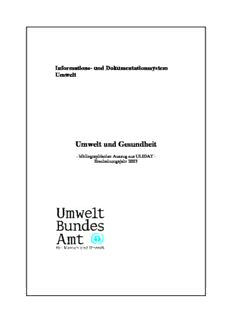
Umwelt und Gesundheit
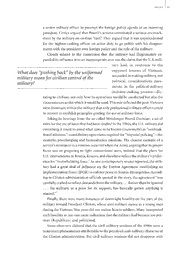
DTIC ADA519804: Rumsfeld, the Generals, and the State of U.S. Civil-Military Relations

Premesse a Cassandra

Polikarpov's I-16 Fighter. Its Forerunners and Progeny

byggforskningsrådet

NOTAS SOBRE A TEORIA DOS PRINCÍPIOS DE ROBERT ALEXY Natália Braga Ferreira NOTES ...

Reiki for Dummies
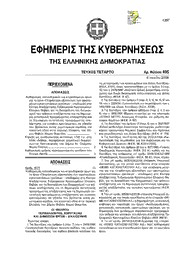
Greek Government Gazette: Part 4, 2006 no. 495

Tomato container gardening: 7 easy steps to healthy harvests from small spaces
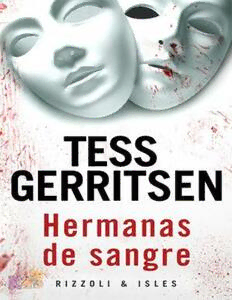
Hermanas de sangre
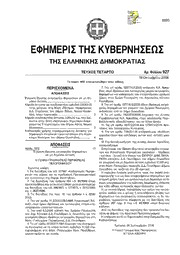
Greek Government Gazette: Part 4, 2006 no. 927

Steve Jobs

Software Language Engineering: Third International Conference, SLE 2010, Eindhoven, The Netherlands, October 12-13, 2010, Revised Selected Papers
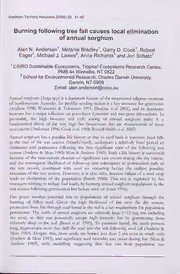
Burning following tree fall causes local elimination of annual sorghum

Trinity College Bulletin, April 1918 (Living aumni)
